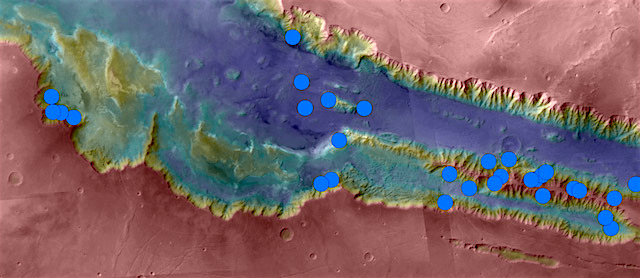 Seasonal dark streaks on Mars that have become one of the hottest topics in interplanetary research don’t hold much water, according to the latest findings from a NASA spacecraft orbiting Mars.
Seasonal dark streaks on Mars that have become one of the hottest topics in interplanetary research don’t hold much water, according to the latest findings from a NASA spacecraft orbiting Mars.
The new results from NASA’s Mars Odyssey mission rely on ground temperature, measured by infrared imaging using the spacecraft’s Thermal Emission Imaging System (THEMIS). They do not contradict last year’s identification of hydrated salt at these flows, which since their 2011 discovery have been regarded as possible markers for the presence of liquid water on modern Mars. However, the temperature measurements now identify an upper limit on how much water is present at these darkened streaks: about as much as in the driest desert sands on Earth.
When water is present in the spaces between particles of soil or grains of sand, it affects how quickly a patch of ground heats up during the day and cools off at night.
“We used a very sensitive technique to quantify the amount of water associated with these features,” said Christopher Edwards of Northern Arizona University, Flagstaff. “The results are consistent with no moisture at all and set an upper limit at three percent water.” (…)
The report of these findings by Edwards and Piqueux has been accepted by the peer-reviewed Geophysical Research Letters and is available online.








